《语言学教程》
| 作者 | 胡壮麟主编 编者 |
|---|---|
| 出版 | 北京:北京大学出版社 |
| 参考页数 | 422 |
| 出版时间 | 1988(求助前请核对) 目录预览 |
| ISBN号 | 7301003390 — 求助条款 |
| PDF编号 | 86996988(仅供预览,未存储实际文件) |
| 求助格式 | 扫描PDF(若分多册发行,每次仅能受理1册) |

1.The Nature of Language1
1.1 What does“language”mean?2
1.2 What is language?3
1.3 Design features4
1.3.1 Arbitrariness4
1.3.2 Duality6
1.3.3 Productivity6
1.3.4 Displacement7
1.3.6 Interchangeability8
1.3.5 Cultural transmission8
1.4 Functions of language10
1.4.1 Phatic10
1.4 2 Directive10
1.4.3 Informative11
1.4.4 Interrogative11
1.4.5 Expressive12
1.4.6 Evocative12
1.4.7 Performative13
1.5 The origin of language13
1.5.1 The divine-origin theory14
1.5.3 The evolutionary theory15
1.5.2 The invention theory15
1.5.4 The first language16
2.What is Linguistics?20
2.1 What is linguistics20
2.2 Some basic distinctions in linguistics22
2.2.1 Speech and writing23
2.2.2 Descriptive er prescriptive?24
2.2.3 Synchronic and diachronic studies25
2.2.4 Langue and parole27
2.2.5 Competence and performance28
2.2.6 Linguistic potential and actual linguisticbehaviour29
2.3 Major branehes of general linguisties30
2.3.1 Phonetics30
2.3.2 Phonology31
2.3.3 Morphology31
2.3.4 Syntax31
2.3.5 Semantics32
2.4 Uses of linguistics32
2.4.1 Linguistics and language teaching32
2.4.2 Linguistics and society33
2.4.3 Linguistics and literature34
2.4.4 Linguistics and psychology34
2.4.5 Some other applications35
3.Phonetics39
3.1 Scope of phonetics39
3.1.1 Articulatory phonetics39
3.1.2 Auditory phonetics39
3.1.3 Acoustic phonetics40
3.2 The vocal organs40
3.2.1 The initiator of the air-stream40
3.2.2 The vocal cords41
3.2.3 The resonating cavities43
3.3.1 Places of articulation46
3.3 Consonants46
3.3.2 Manners of articulation48
3.3.3 The classification of consonants51
3.4 Vowels52
3.4.1 Cardinal vowels53
3.4.2 The classification of vowels54
3.5 Phonetic transcription57
3.5.1 The International Phonetic Alphabet58
3.5.2 Narrow and Broad Transcriptions59
4.Phonology64
4.1 Distinctiveness in speech sounds64
4.2.1 Minimal pairs65
4.2 The phoneme theory65
4.2.2 Free variation66
4.2.3 Complementary distribution66
4.2.4 Phonemic similarity67
4.2.5 Pattern congruity68
4 3 A functional approach69
4.3.1 Neutralization and archiphoneme69
4.3.2 Distinctive features70
4.4 Suprasegmental phonology71
4 4.1 The syllable72
4.4.2 Stress73
4.4 3 Piteh76
4.4.4 Intonation77
5.Morphology83
5.1 Morphology83
5.1.1 Inflection83
5.1.2 Word-formation84
5.2 Word and morpheme87
5.2 1 Morpheme87
5.2.2 Morpheme and phoneme87
5.2.4 Allomorph88
5.2.3 Morphemic structure and phonological tructu re88
5.3.1 Free morpheme and bound morpheme90
5.3.2 Roots90
5.3 Types of morphemes90
5.3.3 Affix91
5.3.4 Root and stem92
5.4 Morphophonology and morphophonemics93
5.4.1 Phonologically conditioned93
5.4.2 Morphologically conditioned94
6.2 Word97
6.2.1 Three senses of“word”97
6.1 Lexicon97
6.Lexicon97
6.2.2 The identification of words99
6.2.3 Subclassification of words101
6.2.4 Lexeme105
6.3 Idiom106
6.3.1 Two basic requirements106
6.3.2 Factors which account for the forma-tion of idioms108
6.3.3 Application of idioms109
6.4.1 Mutual expectancy110
6.4.2 Fixed syntactic-lexical relations110
6.4 Collocation110
6.4.3 Inexplicability111
7.Syntax114
7.1 Syntactic relations114
7.1.1 Positional relation114
7.1.2 Relation of substitutability115
7.1.3 Relation of co-occurrence116
7.2 Construction and constituent116
7.2.1 Construction116
7.2.2 Immediate constituent117
7 2.3 Endocentric and exocentric const ructions118
7.2.4 Coordinate and subordinate constructions120
7.3 Syntactic function121
7 3.1 Subject121
7.3.2 Predicate123
7.3.3 Object124
7.3.4 The relation between classes and functions125
7.4 Category125
7.4.1 Number126
7.4.2 Gender126
7.4.3 Case127
7.4.5 Government128
7.4.4 Concord128
7.5 Phrase,clause and sentence129
7.5.1 Phrase129
7.5.2 Clause129
7.5.3 Sentence130
7.6 The extension of sentence132
7.6.1 Conjoining132
7.6.2 Embedding132
7.6.3 Recursiveness132
7.7 Syntax beyond the sentence133
7.6.4 Hypotactic and paratactic133
7.7.1 Sentential connection134
7.7.2 Cohesion134
8.Semantics139
8.1 What is semantics?139
8.2 What is meaning?139
8.2.1 The realist vs the nominalist140
8.2.2 Conceptualism or mentalism140
8.2.3 Mechanism141
8.2.4 Contextualism141
8.2.6 Functionalism142
8.2.5 Behaviourism142
8.3 Kinds of meaning143
8.3.1 The traditional approach143
8.3.2 The functional approach143
8.3.3 The pragmatic approach144
8.4 Sense relationships144
8.4.1 Synonymy145
8.4.2 Antonymy146
8.4.3 Hyponymy148
8.4.4 Polysomy and homonymy149
8.4.5 Sense relations between sentences150
8.5 Semantic analysis153
8.5.1 Componential analysis153
8.5.2 Predication analysis155
8.5.3 Relational components156
8.5.4 Logical elements157
9.Writing162
9.1 The growth of writing162
9.1.1 The iconic stage162
9.1.2 Word writing162
9.1.3 Syllabic writing164
9.1.4 Sound writing164
9.2.1 Word writing system165
9.2 The writing systems165
9.2.2 Syllabic writing system166
9.2.3 Sound writing system166
9.3 Graphemics167
9.3.1 Graphemes167
9.3.2 Reference168
9.4 Writing and speech168
9.4.1 The graphemic system and the phonologicalsystem168
9.4.3 The influence of one writing system onanother170
9.4.2 Variation in graphemic representation170
9.4.4 The disparity between speech and writing171
9.4.5 The importance of writing172
10.Language Variation175
10.1 The changing language175
10.2 Lexical change175
10.2.1 Invention176
10.2.2 Compounding176
10.2.3 Blending177
10.2.4 Abbreviation178
10.2.5 Acronym178
10.2.6 Metanalysis179
10.2.8 Analogical creation180
10.2.7 Baek-formation180
10.2.9 Borrowing181
10.3 Phonological change183
10.3.1 Loss183
10.3.2 Addition184
10.3.3 Metathesis185
10.3.4 Assimilation185
10.4 Grammatical change186
10.4.1 Morphological change186
10.3.5 Dissimilation186
10.4.2 Syntactical change187
10.5 Semantic change188
10.5.1 Broadening189
10.5.2 Narrowing190
10.5.3 Meaning shift190
10.5.4 Class shift191
10.5.5 Folk etymology191
10.6 Orthographic change192
11.Varieties of Language196
11.1 English or Englishes?196
11.2.1 Regional dialect197
11.2 Dialect197
11.2.2 Temporal dialect198
11.2.3 Social dialect199
11.2.4 Standard dialect204
11.2.5 Ideolect205
11.2.6 Categorization of dialectal varieties206
11.3 Register206
11.3.1 Field of discourse207
11.3.2 Mode of discourse208
11.3.4 Categorization of diatypic varieties209
11.3.3 Tenor of discourse209
11.4 Discourse210
12.Linguistic Comparison215
12.1 Comparative and historical linguistics215
12.1.1 Correspondence215
12.1.2 The reconstruction of a proto-language219
12.1.3 Language families222
12.2 Linguistic typology224
12.2.1 Phonetic typology226
12.2.2 Phonological typology226
12.2.3 Grammatical typology228
12.2.4 Structural typology228
12.2.5 Semantic typology230
13.Language,Thought and Culture237
13.1 Language as the dress of thought237
13.1.1 The monistic view of language and thought237
13.1.2 Reaction to the monistic view238
13.1.3 Language facilitates thinking238
13.2 Sapir-Whorf hypothesis239
13.2.1 Linguistic determinism240
13.2.2 Linguistic relativity243
13.3 Language and culture246
13.3.1 Cultural and linguistic universals246
13.3.2 Cultural and linguistic peculiarities248
13.3.3 Language and culture:a dialectical relationship250
14.Language and Society254
14.1 Language as a social activity254
14.1.1 Internal authority254
14.1.2 External authority255
14.2 Language planning255
14.2.1 The standard language256
14.2.2 The national language257
14.2.3 The official language259
14.3 The interrelation between language and society260
14.3.1 Roles260
14.3.2 Reputations261
14.3.3 Domain262
14.3.4 Communication codes262
14.3.5 Code-switching263
14.3.6 Language maintenance263
14.4 The role of dictionaries and grammars as asocial force263
14 4.1 Dictionaries263
14.4.2 Grammars264
15.Pragmatics269
15.1 Introduction269
15.2 Context and meaning270
15.3 Speech act theory271
15.3.1 Illocutionary acts273
15.3.2 Types of illocutionary acts274
15.3.3 Indirect speech acts275
15.3.4 Difficulties in speech act theory277
15.4 Conversational analysis278
15.4.1 Adjacency pairs278
15.4.2 Preferred second parts279
15.4.3 Presequences281
15.5 The Cooperative Principle(CP)282
15.5.1 The cooperative principle and its Maxims282
15.5.2 Conversational implicatures283
15.5.3 Licensing violations of the Maxims285
16.Linguistics and Literature291
16.1 The function of linguistics in the study ofliterature291
16.2 A method of linguistic analysis293
16.2.1 Phonological features293
16.2.2 Lexical features295
16.2.3 Grammatical features296
16.2.4 Semantic features298
16.2.5 Graphological features301
16.3.1 Deviation303
16.3 The theory of foregrounding303
16.3.2 Parallelism305
16.3.3 Patterning306
16.4 Stylistic Variants307
Appendix Ⅰ.Linguistics and Foreign Language Teaching313
Ⅰ.1 The relation of linguistics to foreign languageteaching313
Ⅰ.2 Various linguistic views and their significancein FL learning and teaching315
Ⅰ.2.1 Traditional grammars315
Ⅰ.2.2 Structuralist linguistics316
Ⅰ.2.3 Transformational-Generative linguistics316
Ⅰ.2.4 Functional linguistics317
Ⅰ.2.5 The theory of communicative competence318
Ⅰ.3 Syllabus design319
Ⅰ.3.1 What is syllabus?319
Ⅰ.3.2 Major factors in syllabus design320
Ⅰ.3.3 Types of syllabus321
Ⅰ.4 Error analysis329
Ⅰ.4.1 Errors,mistakes,and error analysis329
Ⅰ.4.2 Attitudes to errors330
Ⅰ.4.3 Procedure of error analysis331
Ⅰ.4.4 Contrastive analysis and non-contrastiveanalysis332
Ⅰ.5 Testing334
Ⅰ.5.1 Two different approaches to testing335
Ⅰ.5.2 Types of test336
Ⅰ.5.3 Requirements of a good test337
Ⅰ.5.4 Test content and test form340
Ⅰ.5.5 Marking and interpretation of scores341
Ⅰ.6 Summary343
Appendix Ⅱ.Modern Linguistic Schools and Theories350
Ⅱ.1 Ferdinand de Saussure350
Ⅱ.1.1 Nature of the linguistic sign350
Ⅱ.1.2 The relational nature of language units352
Ⅱ.1.3 Langue and parole354
Ⅱ.1.4 The relation between diachronic and synchronic studies356
Ⅱ.2 The Prague School358
Ⅱ.2.1 Introduction358
Ⅱ.2.2 Phonological oppositions360
Ⅱ.2.3 Functional sentence perspective(FSP)362
Ⅱ.3 American structurahsm365
Ⅱ.3.1 Introduction365
Ⅱ.3.2 Structural grammar367
Ⅱ.3.3 Behaviourist psychology in structuralism370
Ⅱ.3.4 A comparison between traditional andstructural grammars371
Ⅱ.4.1 Introduction372
Ⅱ.4 Transformational-Generative grammar372
Ⅱ.4.2 Chomsky s innateness hypothesis374
Ⅱ.4.3 Phrase structure rules377
Ⅱ.4.4 Transformational rules379
Ⅱ.4.5 A comparison between structural grammarand TG grammar383
Ⅱ.5 The London School384
Ⅱ.5.1 Introduction384
Ⅱ.5.2 Malinowski s theory of meaning385
Ⅱ.5.3 Firth s theory of meaning386
Ⅱ.5.4 Halliday s systemic grammar388
Ⅱ.5.5 Halliday s functional grammar393
Index (with Chinese translation)398
1988《语言学教程》由于是年代较久的资料都绝版了,几乎不可能购买到实物。如果大家为了学习确实需要,可向博主求助其电子版PDF文件(由胡壮麟主编 1988 北京:北京大学出版社 出版的版本) 。对合法合规的求助,我会当即受理并将下载地址发送给你。
高度相关资料
-
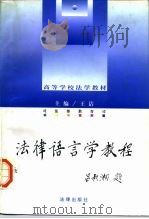
- 法律语言学教程
- 1997 北京:法律出版社
-
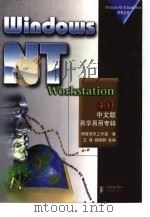
- Windows NT Workstation 4.0中文版易学易用专辑
- 1998年04月第1版 人民邮电出版社
-
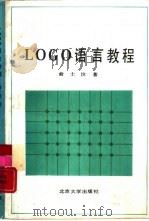
- LOGO语言教程
- 1987 北京:北京大学出版社
-

- ICON语言教程
- 1998 北京:清华大学出版社
-
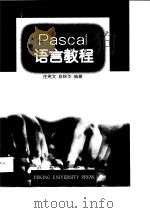
- Pascal语言教程
- 1998 北京:北京大学出版社
-
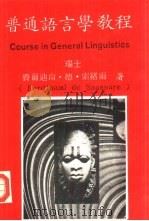
- 普通语言学教程
- 1985 台湾:弘文馆出版社
-
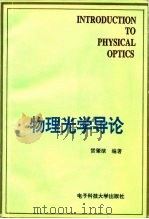
- 物理光学导论
- 1993 成都:电子科技大学出版社
-
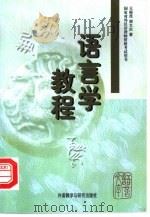
- 语言学教程
- 1998 北京:外语教学与研究出版社
-
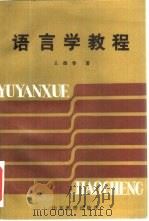
- 语言学教程
- 1987 济南:山东教育出版社
-

- 语言学教程
- 1987 西安:陕西人民教育出版社
-
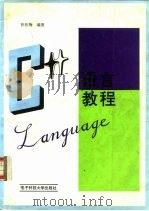
- C++语言教程
- 1993 成都:电子科技大学出版社
-
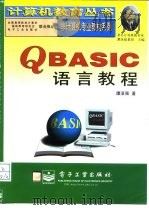
- QBASIC语言教程
- 1997 北京:电子工业出版社
-
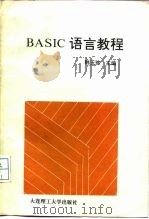
- BASIC语言教程
- 1992 大连:大连理工大学出版社
-

- C语言教程
- 1995 北京:科学出版社
-
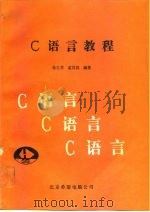
- C语言教程
- 1992 北京希望电脑公司
提示:百度云已更名为百度网盘(百度盘),天翼云盘、微盘下载地址……暂未提供。➥ PDF文字可复制化或转WORD